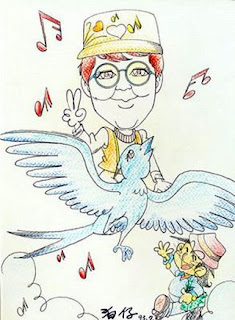AUTHOR
The practice of reproductive surrogacy is in the news in Australia because of the story of a Thai child, Gammy, a twin who was apparently abandoned by the buyers because he was sick. They took his healthy sister.
This story should not be seen as just an individual bad news story. It has much to tell us about the effects of commercial surrogacy. This industry is an offshoot of the very profitable reproductive technology industry, which created, through IVF, the possibility of persons buying children in the marketplace.
The surrogacy industry has created the trafficking in women for the use of their wombs. In extreme forms it includes the imprisonment of women in slave camps. It trafficks babies from one continent to another.
The result is that children can be rejected, left over or abandoned like the sofa that buyers decided was in the end not the right colour. Children have become goods to be traded.
Discussion of surrogacy usually revolves around the rights of the buyers and how the industry can be better regulated. The debate should be about whether such a harmful industry should be permitted at all.
Transforming the place of motherhood
The surrogacy industry has transformed the understanding of motherhood. It creates two classes of mothers, birth mothers and commissioning mothers, who may or may not be related to the babies they pay for. An industry created for profit has already upturned generationalism, with grandmothers bearing children for their own daughters.
The women who give birth to the children are called surrogate mothers, in an attempt to distance them from the “real” or commissioning mothers. Yet the surrogate mothers are the persons who have carried the infants in their wombs. They created them out of their flesh and blood for nine months.
They suffer not just the exploitation of having their bodies controlled by others – the buyers, agents and doctors – but then must suffer the psychological effects of having their babies removed. The pain of poor and often desperate women in other countries who are sometimes repeatedly pimped out to baby farms by male partners or families for profit is not considered relevant. They are expected to treat their bodies as factories and their babies as products that are unrelated to their humanness.
Trafficking is made easier because the surrogacy industry has separated childbirth from motherhood. Once the ability to give birth was a source of women’s strength, something women could do in a male-dominated society that men could not. It is now possible for men to acquire children without the bother of developing a relationship with a woman.

A Japanese businessman has reportedly managed to acquire 13 babies by surrogacy, nine of whom were kept in a nursery he sometimes visited. He intended to take them to Japan to run his business when they grow up.
This story reveals the problems that can arise when single men or men in couples can buy children who will have no mother of any kind. These children may be acquired for the purposes of abuse, and there may be no woman with an interest in the child’s welfare around to protect that child.
The Australian buyer of the Thai child has a wife, but has been found to be a serious child sex offender, which raises questions about his intentions for the child. There are precedents of the creation of children for the specific purpose of sexual abuse. The father in the baby Gammy case has publicly denied this was his intention.
A Queensland male gay couple were imprisoned last year for, the police believe, creating a boy child by surrogacy specifically for abuse. The boy was acquired from a Russian surrogate mother and the abuse started shortly after birth. Sexual abuse of him was uploaded to a boy lovers’ site and he was taken around the world for abuse by other paedophiles.
Money for babies invites trafficking
The surrogacy industry not only rips apart the connection between motherhood and reproduction, but undermines the welfare of trafficked women and babies. It raises disturbing questions about what children are for, an end in themselves or to serve the purposes of their buyers.
Surrogacy industry entrepreneurs are campaigning to change the law in Australia, where only altruistic surrogacy is allowed. Their aim is to enable the commercial surrogacy industry to grow in this country. A supposedly well-regulated industry here, they say, is the answer to abuses overseas.
It is time to open a debate among feminists, ethicists and politicians about the implications of the commercial industry for the surrogates and for the children. While three Australian states now have laws to prevent the use of surrogates in other countries, these need to be adopted in all states.
Any attempt to recreate in Australia the harms that the commercial surrogacy industry has created elsewhere should be resisted.








沒有留言:
張貼留言